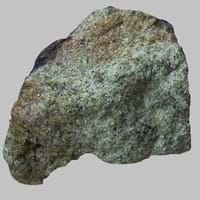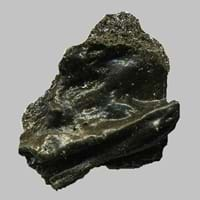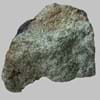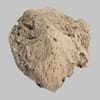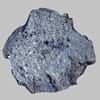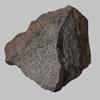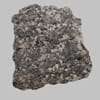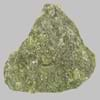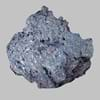Definition
Lherzolite is a type of ultramafic igneous rock which contains essential olivine and clinopyroxene and orthopyroxene in equal proportions
Tachylite is a vitreous form of basaltic volcanic glass. This glass is formed naturally by the rapid cooling of molten basalt
Discoverer
Unknown
Unknown
Etymology
From the Lherz Massif, an alpine peridotite complex, at Étang de Lers, near Massat in the French Pyrenees; Lherz is the archaic spelling of this location
From German Tachylite, from tachy- + Greek lutos soluble, melting
Class
Igneous Rocks
Igneous Rocks
Sub-Class
Durable Rock, Hard Rock
Durable Rock, Medium Hardness Rock
Other Categories
Fine Grained Rock, Opaque Rock
Coarse Grained Rock, Fine Grained Rock, Medium Grained Rock, Opaque Rock
Color
Black, Dark Greenish - Grey, Green, Pink, Purple
Black, Dark Brown
Durability
Durable
Durable
Appearance
Glassy, Vesicular and Foilated
Glassy
Interior Uses
Decorative Aggregates, Entryways, Homes, Interior Decoration
Decorative Aggregates, Interior Decoration
Exterior Uses
As Building Stone, As Facing Stone, Office Buildings
As Building Stone, As Facing Stone, Garden Decoration, Paving Stone
Other Architectural Uses
Curbing
Curbing
Construction Industry
Landscaping, Manufacture of Magnesium and Dolomite Refractories, Used for flooring, stair treads, borders and window sills.
Cutting Tool, Knives, Landscaping, Scrapers
Medical Industry
Not Yet Used
Not Yet Used
Antiquity Uses
Artifacts, Sculpture
Artifacts
Commercial Uses
As armour rock for sea walls, Source of Magnesia (MgO), Used in aquariums
Cemetery Markers, Creating Artwork
Types
Garnet Lherzolite
Not Available
Features
Host Rock for Lead
Available in Lots of Colors and Patterns, Clasts are smooth to touch, NA
Archaeological Significance
Monuments
Not Yet Used
Not Yet Used
Famous Monuments
Not Applicable
Not Applicable
Sculpture
Used
Not Yet Used
Famous Sculptures
Data Not Available
Not Applicable
Pictographs
Not Used
Used
Petroglyphs
Not Used
Used
Figurines
Used
Not Yet Used
Formation
Lherzolite is a fine-grained, hard rock which is a type of metasomatite, essentially altered basalt. It forms with or without crystallization, either below the surface as intrusive rocks or on the surface as extrusive rocks.
Tachylite is a fine-grained, hard rock which is a type of metasomatite, essentially altered basalt. It forms with or without crystallization, either below the surface as intrusive rocks or on the surface as extrusive rocks.
Mineral Content
Harzburgite, Olivine, Pyroxene, Pyrrhotite
Feldspar, Olivine
Compound Content
CaO, Cr, Chromium(III) Oxide, MgO
Fe, Mg
Types of Metamorphism
Cataclastic Metamorphism, Contact Metamorphism
Burial Metamorphism, Cataclastic Metamorphism, Contact Metamorphism, Hydrothermal Metamorphism, Impact Metamorphism, Regional Metamorphism
Types of Weathering
Biological Weathering, Chemical Weathering, Mechanical Weathering
Biological Weathering, Chemical Weathering, Mechanical Weathering
Types of Erosion
Chemical Erosion, Water Erosion, Wind Erosion
Chemical Erosion, Sea Erosion, Water Erosion, Wind Erosion
Grain Size
Fine Grained
Medium to Fine Coarse Grained
Fracture
Conchoidal
Conchoidal
Porosity
Less Porous
Less Porous
Luster
Subvitreous to Dull
Resinous
Cleavage
Perfect
Not Available
Toughness
2.7
Not Available
Specific Gravity
2.86
2.4
Transparency
Opaque
Opaque
Density
2.8-2.9 g/cm3
3.058 g/cm3
Resistance
Heat Resistant, Impact Resistant, Pressure Resistant, Wear Resistant
Heat Resistant, Impact Resistant, Wear Resistant
Deposits in Eastern Continents
Asia
Russia, South Korea
Cambodia, Russia, South Korea
Africa
Western Africa
East Africa
Europe
United Kingdom
England, Germany, Hungary, Iceland, Scotland, Sweden
Others
Not Yet Found
Hawaii Islands
Deposits in Western Continents
South America
Not Yet Found
Not Yet Found
Deposits in Oceania Continent
Australia
Central Australia, Western Australia
Victoria
